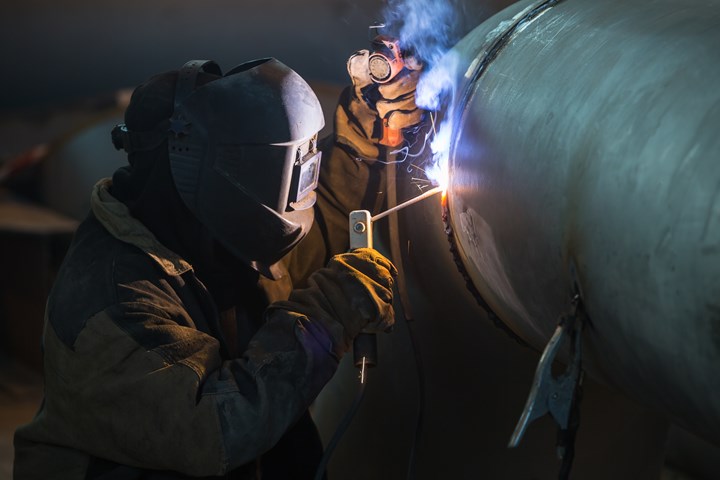Achieving Welding Excellence: Unveiling the Secrets of WPS Implementation and Optimization
In the world of welding, achieving excellence is a quest that pivots on the careful application and optimization of Welding Treatment Specifications (WPS) By diving into the crucial elements, strategies, obstacles, and best practices connected with WPS, a globe of welding excellence waits for those who are ready to explore its depths.
Relevance of WPS in Welding
The Importance of Welding Treatment Requirements (WPS) in the welding sector can not be overstated, functioning as the foundation for ensuring consistency, quality, and safety and security in welding procedures. A WPS offers comprehensive directions on how welding is to be performed, including essential variables such as materials, welding procedures, joint design, filler steels, preheat and interpass temperatures, welding currents, voltages, travel speeds, and much more. By adhering to a well-defined WPS, welders can keep harmony in their job, resulting in constant weld high quality throughout various tasks.

Key Elements of WPS
Discussing the integral components of a welding procedure spec (WPS) is necessary for recognizing its role in welding procedures. One critical facet of a WPS is the welding procedure requirements, which outlines the particular welding processes to be made use of, such as gas tungsten arc welding (GTAW) or protected metal arc welding (SMAW) By incorporating these key aspects into the WPS, welding procedures can be standardized, guaranteeing top quality, performance, and security in welding procedures.
Techniques for WPS Optimization

Second of all, training and certification of welding workers according to the specific requirements of the WPS is vital. Providing detailed training programs and making sure that welders are certified to execute procedures detailed in the WPS can lead to better welds and reduced rework.
Furthermore, leveraging innovation such as welding software application and monitoring systems can aid in enhancing WPS. These tools can assist in tracking variables, guaranteeing criteria are within defined limits, and supplying real-time comments to welders, enabling them to make instant changes for improved weld top quality.
Usual Challenges and Solutions
Encountering challenges in implementing the approaches for WPS optimization can hinder welding procedures' effectiveness and high quality. One usual obstacle is insufficient training or understanding of the welding treatment specs (WPS) among the welding group.
One more challenge is the absence of appropriate documentation and record-keeping, which is important for WPS optimization. Without clear records of welding parameters, products made use of, and assessment results, it ends up being difficult to determine locations for improvement and guarantee uniformity in welding processes. Applying a durable paperwork system, such as digital welding administration software application, can help streamline record-keeping and facilitate information evaluation for constant renovation.
In addition, inconsistent welding devices calibration and upkeep can posture a considerable obstacle to WPS optimization. Normal tools checks, calibration, and maintenance schedules need to be complied with strictly to ensure that welding criteria are properly managed and maintained within the specified tolerances (welding WPS). By addressing these common difficulties with proactive solutions, welding procedures can enhance performance, quality, and overall welding excellence
Ideal Practices for WPS Implementation
To ensure effective WPS implementation in welding procedures, adherence to industry requirements a knockout post and careful attention to information are critical. When starting WPS implementation, it is crucial to start by thoroughly comprehending the particular welding needs of the job. This entails an extensive evaluation of the welding procedure specs, products to be welded, and the ecological problems in which the welding will certainly straight from the source occur.
When the requirements are clear, the following action is to select the appropriate welding treatment that aligns with these specifications. This entails speaking with the relevant codes and criteria, such as those given by the American Welding Culture (AWS) or the International Organization for Standardization (ISO), to make certain conformity and top quality.
Additionally, recording the entire WPS implementation procedure is crucial for traceability and quality assurance. Detailed documents ought to be maintained concerning welding specifications, product prep work, preheat and interpass temperature levels, welding consumables made use of, and any kind of deviations from the initial treatment. Normal audits and evaluations of the WPS can help recognize locations for renovation and make sure continuous optimization of the welding process.


Verdict
In conclusion, the execution and optimization of Welding Procedure Requirements her latest blog (WPS) is important for achieving welding quality. By understanding the crucial elements of WPS, executing efficient techniques for optimization, resolving typical challenges, and complying with ideal methods, welders can guarantee high-grade welds and secure working conditions. It is critical for professionals in the welding sector to focus on the appropriate execution of WPS to enhance total welding performance and achieve desired outcomes.
The Significance of Welding Procedure Specs (WPS) in the welding sector can not be overstated, serving as the foundation for making certain uniformity, quality, and security in welding procedures. A WPS gives comprehensive directions on just how welding is to be lugged out, including essential variables such as materials, welding processes, joint style, filler steels, interpass and preheat temperatures, welding currents, voltages, travel speeds, and a lot more. One important element of a WPS is the welding process requirements, which lays out the specific welding processes to be utilized, such as gas tungsten arc welding (GTAW) or protected metal arc welding (SMAW) By integrating these key elements right into the WPS, welding treatments can be standard, making certain quality, efficiency, and safety in welding operations.
It is vital for experts in the welding industry to focus on the correct application of WPS to boost total welding efficiency and attain wanted results.